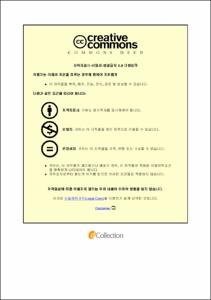원위 대퇴골 골절에서 이중 금속판 고정술의 결과 보고
- Alternative Title
- 인공 슬관절 주변 골절과 인공 삽입물이 없는 골절의 비교
- Abstract
- Abstract
Background: The aim of this study is to evaluate surgical outcomes of dual plating for the distal femur fractures with comparison between periprosthetic and non-periprosthetic fractures.
Method: This retrospective cohort study analyzed outcomes of dual locked plate fixation for distal femur fractures. 49 patients (43 females and 6 males) who were treated with double plate construct from July 2008 to August 2020 were included from institutionally approved orthopedic database. 29 patients were classified into periprosthetic fracture group (Group P), and the other 20 patients were designated to non-periprosthetic fracture group (Group N). Baseline data regarding age, sex, body mass index (BMI), injury mechanism and the fracture pattern including open injury, comminution, AO/OTA classification and Su classification were recorded. Radiographic outcome was evaluated with union time and mechanical lateral distal femoral angle (mLDFA). Clinical parameters included knee range of motion, walking ability using Koval score, and knee society score (KSS) at the postoperative 1 year. The need for reoperation and complications such as infection, mechanical failure, and non-union were also reviewed.
Results: Mean age at operation was 71.1 years, and the average follow-up period was 37 months (range, 12–138 months). Bony union was achieved in 47 patients (P 28, N 19) among total 49 patients (96%). Mean union time was 34 weeks in group P, 40 weeks in group N. The mean mLDFA after operation were restored to 90.5° (group P) and 87.7° (group N) and were maintained to 90.5° (group P) and 88.3° (group N) until final follow-up. Final knee range of motion arc angle on average were 130° in group P and 107° in group N. (p = 0.14) Final Koval score on average were 1.7 in group P and 1.8 in group N. Final KSS knee score on average were 73.8 in group P and 87.1 in group N. There was no case of infection, but 6 cases (12%) of secondary surgery: 1 case of nonunion, 2 cases of implant failure, 1 case of junctional fracture after slip down and 2 cases of implant removal due to symptomatic discomfort.
Conclusions: Dual plating for distal femur fractures showed excellent union rate and limb alignment with low complication rate. Overall outcomes were similar between periprosthetic and non-periprosthetic fracture groups. Dual plating on the distal femur would be a good surgical option for poor bone stock and comminution.
|국문 요약
연구배경: 이 연구는 원위 대퇴골 골절에서 이중 금속판 고정술의 결과를 보고하고, 인공 슬관절 주변 원위 대퇴 골절과 인공 삽입물이 없는 골절을 비교하기 위해 시행되었다.
연구방법: 이 연구는 후향적 코호트 연구로, 인공 슬관절 주변 원위 대퇴 골절과 인공 삽입물이 없는 AO/OTA 33형 골절에서 이중 금속판 고정술의 결과를 분석하였다. 2008년 7월부터 2020년 9월까지 이중 금속판 고정술을 시행 후 1년 이상 추적관찰이 가능했던 총 49명이 연구에 포함되었으며, 인공 슬관절 주변 골절 그룹(P) 29명과 인공 삽입물이 없는 골절 그룹(N) 20명으로 나뉘었다. 나이, 성별, 체질량지수, 수상기전, 골절 형태 등과 같은 기본 정보가 수집되었고, 방사선학적 지표로는 골유합 기간, 역학적 외측 원위 대퇴각, 내반 변형각이 이용되었다. 임상적 지표로는 슬관절 가동범위, Koval 점수를 이용한 보행정도, 슬관절 점수가 사용되었다. 재수술 여부와 감염, 기계적 합병증, 불유합 등의 결과도 분석에 이용되었다.
연구결과: 수술 당시 평균 연령은 71.1세였고, 평균 추적관찰 기간은 37 개월 (범위, 12-138 개월)이었다. 골유합은 전체의 96%인 47명 (P 28명, N 19명)에서 확인되었으며, 평균 골유합 기간은 P 그룹에서 34주, N 그룹에서 40주로 확인되었다. 외측 원위 대퇴각은 마지막 추적 관찰 시 P 그룹에서 90.5°, N 그룹에서 88.3°로 확인되었다. 슬관절 가동범위는 P그룹에서 130°, N 그룹에서 107°로 확인되었으며, 최종 슬관절 점수의 평균값은 P 그룹에서 73.8, N 그룹에서 87.1로 확인되었다. 감염이 확인된 사례는 없었지만, 전체의 12%인 6명의 환자에서 재수술이 필요했다. 재수술의 이유로는 불유합 1명, 고정 실패 2명, 낙상 후 변연부 골절 1명, 금속물로 인한 불편감으로 제거 2명이였다.
연구결론: 이중 금속판 고정술은 원위 대퇴골 골절에서 만족할 만한 골유합과 하지 정렬을 얻었고 합병증의 발생은 적었다. 전반적인 수술의 결과는 인공 슬관절 주변 원위 대퇴골 골절과 인공 삽입물이 없는 원위 대퇴골 골절에서 유사했다.
- Issued Date
- 2022
- Awarded Date
- 2022-02
- Type
- dissertation
- Alternative Author(s)
- jaehyeon seo
- Affiliation
- 울산대학교
- Department
- 일반대학원 의학과의학전공
- Advisor
- 김지완
- Degree
- Master
- Publisher
- 울산대학교 일반대학원 의학과의학전공
- Language
- eng
- Rights
- 울산대학교 논문은 저작권에 의해 보호 받습니다.
- Appears in Collections:
- Medicine > 1. Theses (Master)
- 파일 목록
-
-
Download
 200000603270.pdf
기타 데이터 / 2.06 MB / Adobe PDF
200000603270.pdf
기타 데이터 / 2.06 MB / Adobe PDF
-
Items in Repository are protected by copyright, with all rights reserved, unless otherwise indicated.